Bloomington council committee digs into road funding to weigh repaving of College Mall Road against other transportation goals
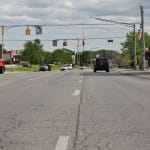
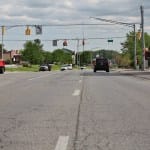
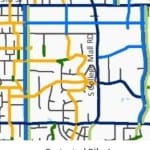

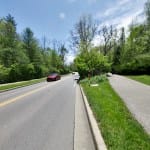
A Wednesday meeting of the Bloomington city council’s four-member transportation committee has set up the full council for a possible animated discussion next week.
On the council’s May 20 agenda will be an item related to funding for the repaving of College Mall Road between 3rd Street and Moores Pike.
The agenda item is a hearing on an appropriation ordinance that includes the College Mall repaving. The appropriation also includes some fund transfers that are needed for a couple other transportation projects.
The other projects involve intersection improvements at Sare Road and Moores Pike, and a multi-use path to be built on the west side of Sare Road south of that intersection.
The May 20 meeting could also include a final vote on the appropriation ordinance, which got a first reading on May 6.
On Wednesday, the committee gave the appropriation a mixed reaction.
The appropriation ordinance has three key elements:
- An appropriation of $900,000 from some restricted local income tax (LIT) funds to go towards matching INDOT money for the Sare Road multi-use path and intersection improvement project;
- A transfer of $1,731,205 from the motor vehicle highway fund to the a restricted sub-fund of the motor vehicle highway fund—to comply with a directive from the State Examiner to all cities across the state so that restricted funds can be tracked better; and
- A transfer of $386,000 from classification 2 (supplies) to classification 4 (capital outlays) in the cumulative capital development fund, so that the money can be spent to match state funds awarded for the repaving of College Mall Road between 3rd Street and Moores Pike.
In early April, Bloomington’s College Mall repaving project was awarded $382,076 through the state’s Community Crossing grant program. A total of $126 million was given out statewide.
Towards the end of the committee’s roughly 90-minute meeting, councilmember Steve Volan identified as “the issue at hand” the third element of the ordinance—the reclassification of funds to allow for their use in the College Mall repaving project.
The second element was not controversial for committee members, because it’s a purely a matter of accounting that does not involve spending money.
The first element of the ordinance allows for spending money, but the projects involved were not disputed by committee members.
According to Matt Smethurst, a project manager in the public works department, the Sare Road and Moore Pike intersection improvements include: replacement of outdated traffic signals; pedestrian countdown signals; pedestrian island reconstruction to shorten the pedestrians crossing distance; and new crosswalk pavement markings.
Also included in the $900,000 appropriation is a multi-use path that will extend from Cathcart Street southward on the west side of Sare Road about three-quarters of a mile to Buttonwood Lane.
It was the third element in the ordinance that caused Volan to abstain and Kate Rosenbarger to vote no in the straw poll among committee members that will form the group’s report to the full council.
They both questioned spending $382,000 on a project that does not currently incorporate any improvements to the bicycling infrastructure along College Mall Road. Volan was keen to see protected bike lanes marked out on College Mall, using flexible bollards. City staff at the meeting estimated such bollards might cost around $50,000.
Rosenbarger was also supportive of installing protected bicycle lanes on College Mall Road. She cited the city’s transportation plan, which includes such lanes on that road in its recommended “full build bicycle network.” But Rosenbarger also questioned whether the $382,000 should be spent on a repaving project, when that amount already exceeds the entire annual budget for the city council sidewalk committee.
Rosenbarger questioned whether the Bloomington should “dump money into helping drivers get around at expense of other forms of transportation.” While it makes sense to match the Community Crossings grant, Rosenbarger said, it still means spending $386,000 to make it more pleasant to drive.
As described by Neil Kopper, senior project engineer in the transportation department, the College Mall project involves a simple milling away of about an inch and a half of asphalt and repaving the surface.
Joe Van Deventer, the city’s director of street operations, told committee members the road is due for resurfacing. It’s been maybe 20 years since it was last repaved and it’s typical to repave a road like that every 15 to 17 years, he said. In 2017, College Mall Road had a rating of 5 out of 10 on the scale that’s used to assess pavement. The surface of College Mall Road is really starting to alligator crack and deteriorate, Van Deventer said.
Kopper said even if an investment in re-marking of the pavement for bicycle lanes is made in the future, the pavement still needs to be maintained now, and it would not lead to any regret, Kopper assured committee members. Kopper returned to that point on a few occasions during the committee meeting.
Committee member Isabel Piedmont-Smith said that the appropriation ordinance was on its face “just moving money around” and using money for what it was intended. Still, she thought the committee’s conversation that scrutinized the repaving project would be helpful as the council looks at the city’s transportation priorities. But Piedmont-Smith wanted to “rein it back in” to the specific appropriation ordinance.
Piedmont-Smith said it would be “stupid” to leave the state’s Community Crossings grant money on the table. She was not sure if the project timeline would allow for the kind of thorough traffic study that would be required to evaluate the possible removal of motor vehicle travel lanes to make room for protected bicycle lanes. She concluded that protected bicycle lanes could be added later.
The sort of study Piedmont-Smith mentioned was first described by Kopper, in response to Volan’s suggestion that Bloomington follow the example set by INDOT’s current repaving project on 3rd Street, east of SR 46, which will add bicycle lanes.
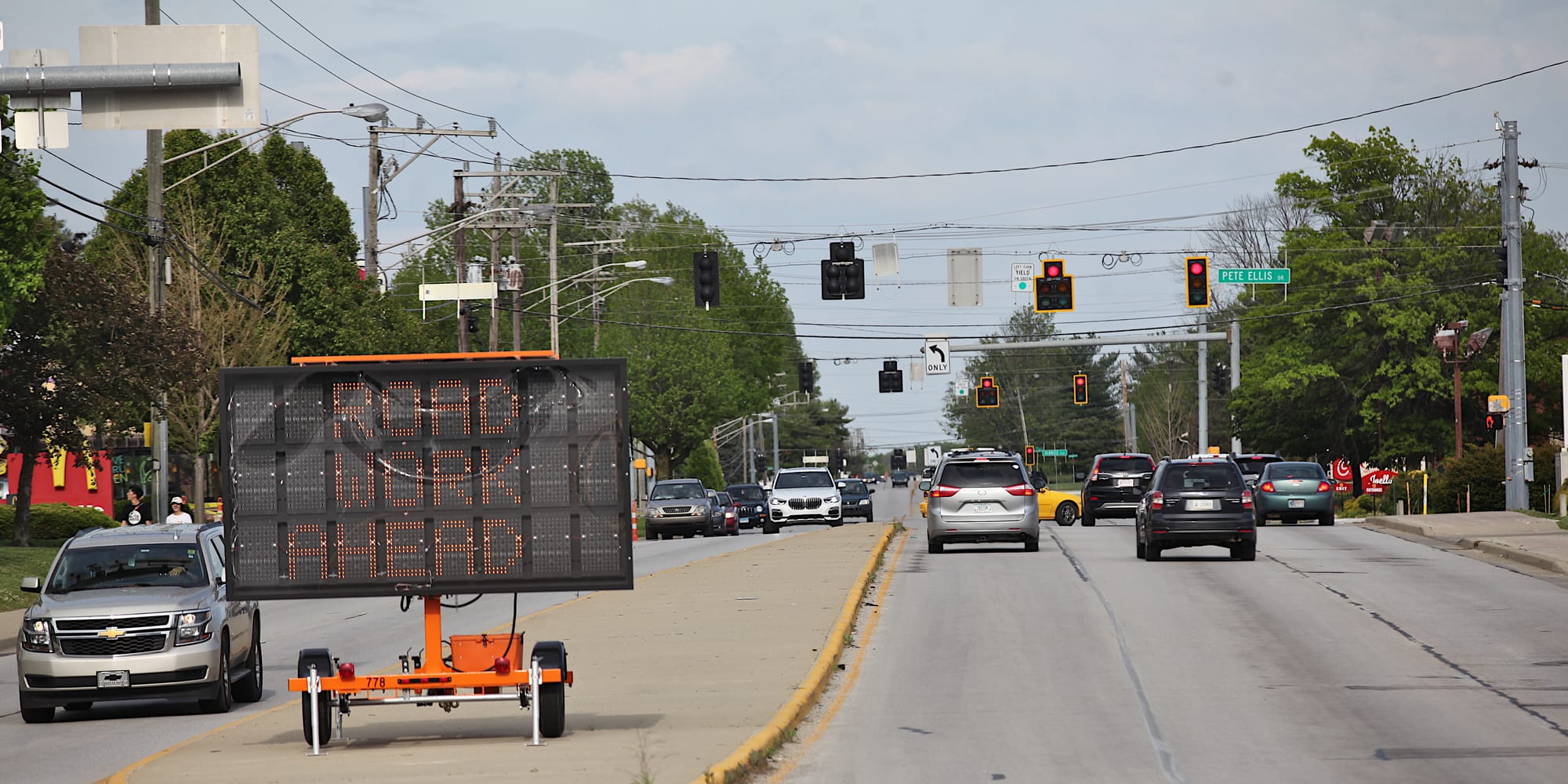

Kopper told Volan that a key difference between the two corridors is that the 3rd Street corridor had been studied recently and the traffic volumes were around 18,000 vehicles a day at their highest. That is below the threshold for successful removal of travel lanes without causing traffic to queue up, blocking upstream intersections, Kopper said.
The city doesn’t have recent traffic counts for College Mall Road, Kopper said, but from older numbers and more recent numbers near there, he though the volume was around 21,000 or 22,000 vehicles, which is above the typical successful threshold, Kopper said.
According to the city of Bloomington, INDOT’s 3rd Street project includes patching, milling, and paving on the along the 1.4-mile section of 3rd Street between College Mall Road and SR 446. Between Clarizz and SR 446, the road will be striped to include center turn lane, with one travel lane in each direction, and bicycle lanes on both sides. The project is supposed to be done by August this year.




Comments ()